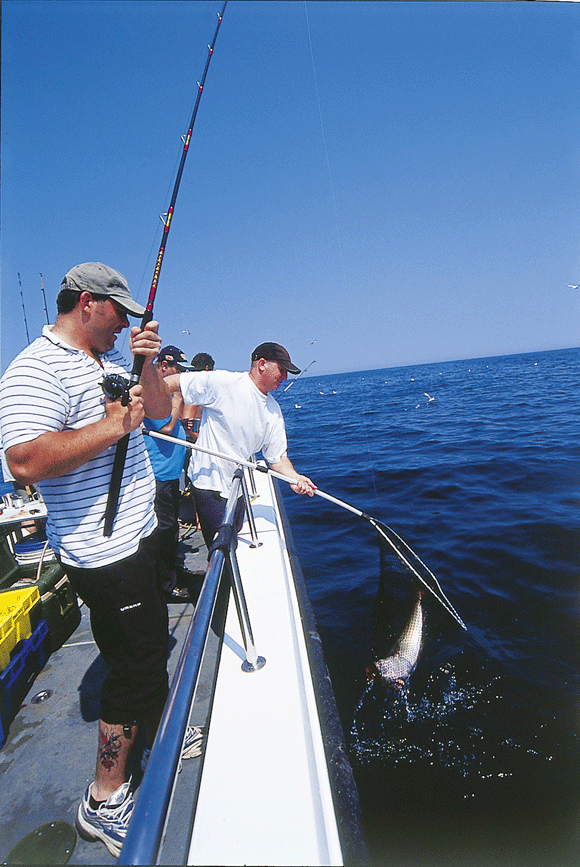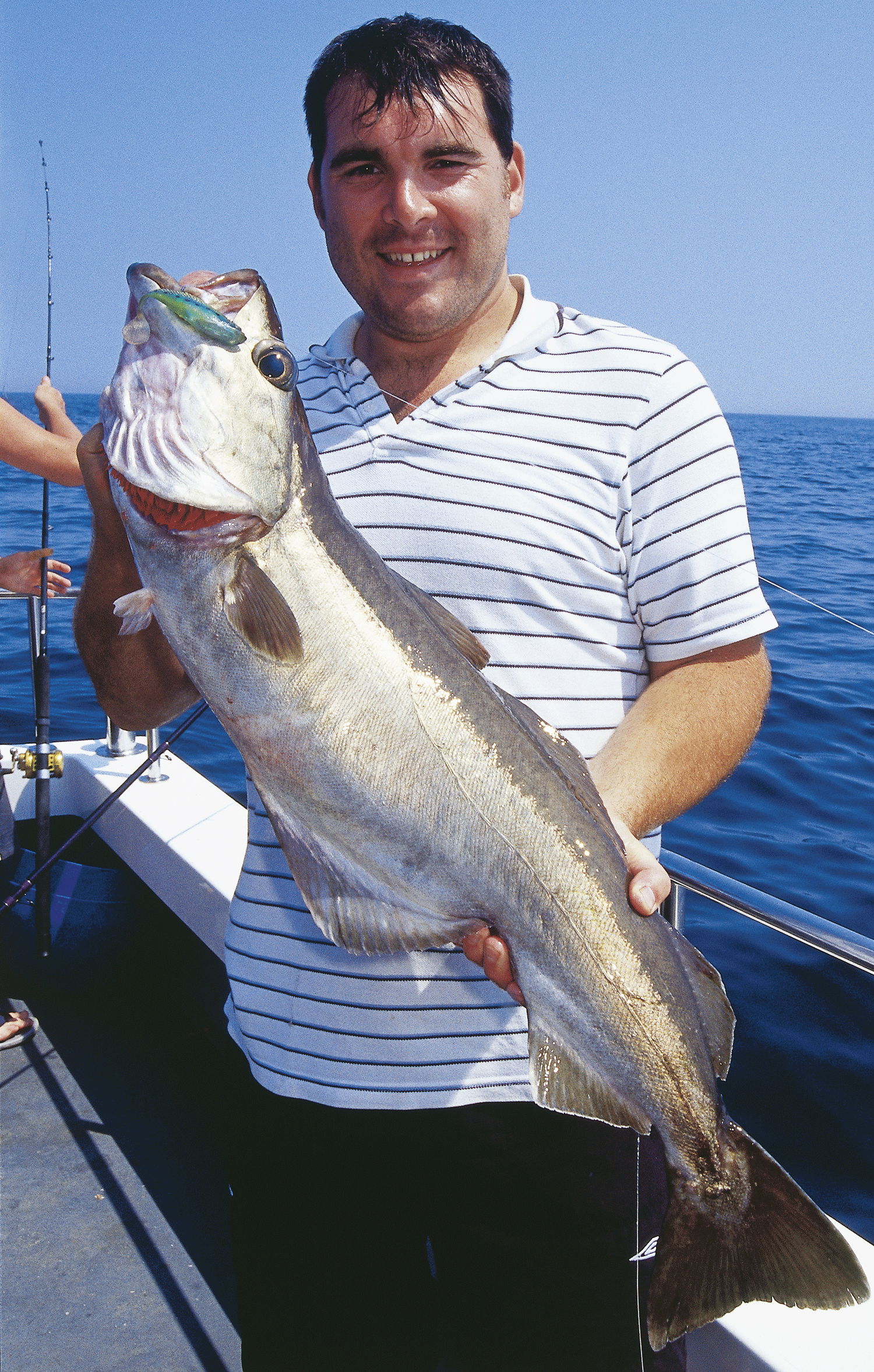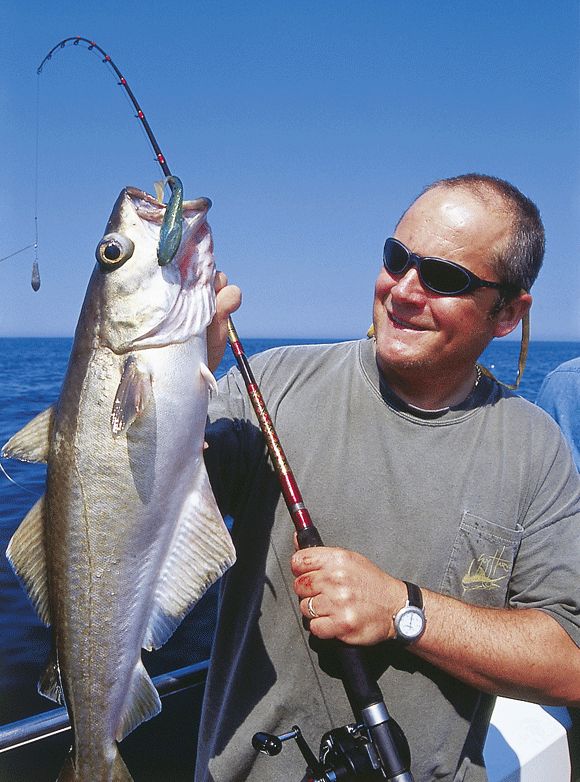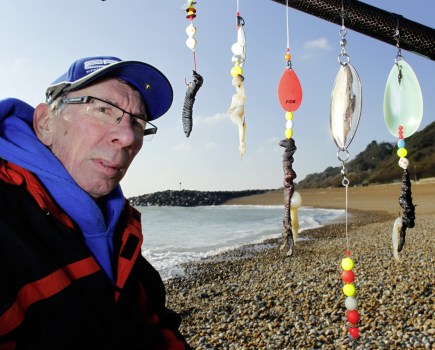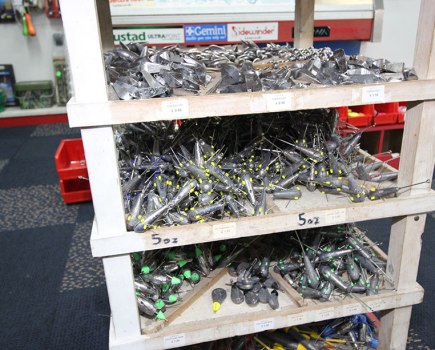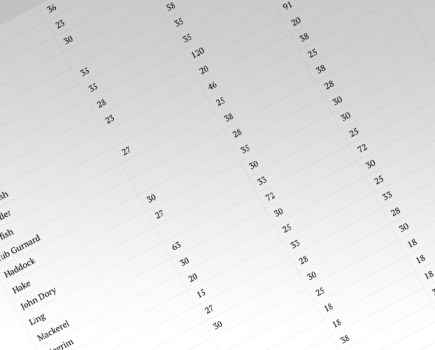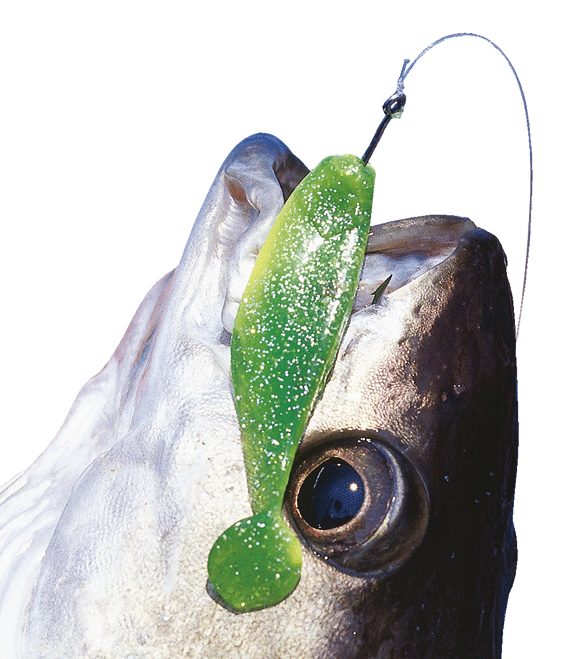 Boat angler Neil Evans faces the age-old dilemma of choosing the right colour lure for sea fishing in deep water. He’s a little sceptical, worrying that bright hues catch more anglers than fish. The angler from Bedlinog, Merthyr Tydfil, teams up with Dave Lewis to see if we can prove a point and find out whether the colour of your sea fishing lures actually matters…
Boat angler Neil Evans faces the age-old dilemma of choosing the right colour lure for sea fishing in deep water. He’s a little sceptical, worrying that bright hues catch more anglers than fish. The angler from Bedlinog, Merthyr Tydfil, teams up with Dave Lewis to see if we can prove a point and find out whether the colour of your sea fishing lures actually matters…
The colour of lures was a hot topic way back in the 1970s when I started wreck fishing. Some crews argued that when fishing in over 150 feet of water it didn’t matter what the colour was because everything looked virtually the same – black.
Others held the view that the choice of colour was critical to success, regardless of depth, and unless you rigged up with the day’s hot lure you would probably lag behind in the catch stakes.
So does the choice of lure colour make any difference when fishing deep water, and if so, which are the best colours to have in the tackle box? Searching for the answer is the angling equivalent of finding the Holy Grail and it seems a lot of mystery surrounds that myth.
At best all you can do is grab a mixed selection of lures, go fishing and find out what lures produce the fish. That is precisely what Neil Evans and I did aboard Andrew Alsop’s White Waters, operating out of Milford Haven.
We seemed to have drawn a lucky card the day Neil and I joined up because the conditions for wrecking were absolutely perfect with virtually flat seas and an ideal tide to ensure a decent chance of fish.
The wreck Andrew had in mind sat in 220ft of water around 34 miles off St Anne’s Head at the mouth of The Haven, and with a steady 16 knot cruising speed we were in position for our first drift a little over two hours after setting off.
These days most wreck anglers target pollack using either shads or jellyworms, though the wide range of artificial sandeels will still take their fair share of fish.
In recent years I have become a firm believer in shads and not just because they are such a deadly lure for pollack, but also because they are more likely to attract all sorts of fish, like bass, cod and coalfish, which also lurk around wrecks.
Neil and I fished with identical dark green shads, which were extremely natural-looking and lifelike, with my choice based on no other reason than they were the first I found in my tackle bag.
I am of the opinion that while the colour of a lure can be absolutely critical in relatively shallow water, once the depth drops beyond 150ft or so colour is virtually irrelevant.
On any day’s wreck fishing one or two anglers will always catch the majority of the fish and the others will always be quick to point out that the reason for their success is down to the colour lure they are using. That’s the point at which they start switching to the same colour, be it bubble-gum pink or hot orange. You don’t need a degree in marine biology to fathom out that as more and more anglers use one specific colour lure, then the majority of fish brought to the boat will have been caught on the same colour lure.
I reckon the more successful anglers use a slightly different technique, often no more than a very subtle change in speed of retrieve compared to everyone else aboard.
It might also be the length of their hooklength is longer or shorter, perhaps the way they have rigged their lure on the hook or even the fact they are using a thinner diameter braid mainline that on the day is offering a slightly better presentation.
Sometimes it is even simpler – the anglers are fishing on the side of the boat that offers better presentation or the fish are shoaled up tight and the same people hit fish time after time.
From the very first drift we were into plenty of pollack. At first they were samples to 6lb, but as the ebbing tide kicked in and started to gather momentum so the size of the fish increased.
Individual specimens over 10lb started to come aboard every other drift and at least two specimens weighing over 15lb were among our final bag of 100-plus pollack.
Remember this was mid-July 2005, so imagine what the fishing could be like in the winter?
WHAT COLOURS WORK BEST?
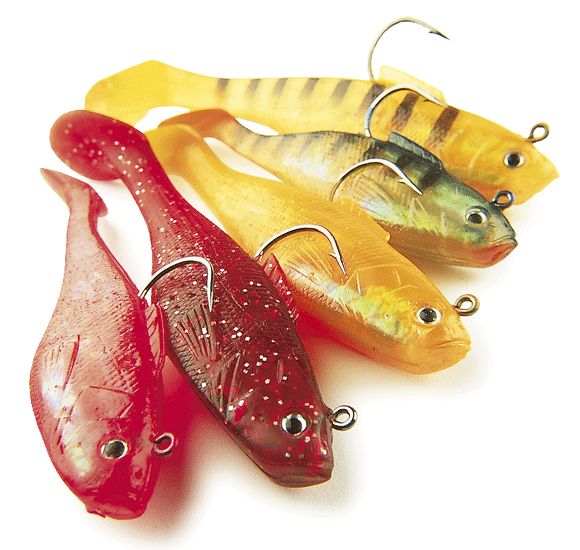 I bet you all want to know what colour attracted the most fish? As things turned out it was Neil and I who had the most fish with Neil declaring: “This is the best day’s boat fishing I have ever had.”
I bet you all want to know what colour attracted the most fish? As things turned out it was Neil and I who had the most fish with Neil declaring: “This is the best day’s boat fishing I have ever had.”
He was still working with the original green shad I had given him at the start of the session and I hadn’t the heart to ask him to change his lucky lure.
During our boat trip I had tried at least six different colour lures and they were all equally as effective as the other, while the rest of the party had fished lures from every colour in the rainbow.
While I concede our results prove nothing, we can say with some confidence that some days the choice of colour makes no difference. The wreck held a good head of hungry fish so even technique wasn’t that critical, but I remain convinced that on less productive days the fine line between success and failure rests more on getting your technique right, rather than simply choosing the right colour lure.
“When there are lots of feeding fish on a wreck, individual fish can’t afford to be choosy,” said skipper Andrew, as we steamed back towards the distant Welsh coastline.
“On days like these, you’ll catch fish on pretty much any shape or colour lure. On other days other colour lures do appear to be more effective with black and orange being the must-have colours in an angler’s tackle box.”
The moral to this tale is that you should have a wide selection of lures in your bag with a few black and orange ones handy… just in case.
QUESTIONS AND ANSWERS
Q What course of action should I take when snagged from a drifting boat?
Dave Lewis says: I have found that when fishing on the drift the best course of action, when your terminal rig becomes snagged, is to lock the spool with your thumb to prevent the clutch slipping and point the rod directly down the line. This allows the pressure on the line to steadily build until something gives; hopefully somewhere near the terminal rig.
Some skippers take a few wraps of line around a piece of wood then pull for a break, though I dislike this technique as often I have seen the line break at the surface, obviously resulting in the loss of a lot of line when fishing deep water. That said if your line is getting pulled under the boat this might be necessary to avoid a broken rod. Avoid wrapping the line around your hands, especially if using braid, as you can easily inflict deep and nasty cuts as a result of the line cutting through to the bone.
Has braided line any advantage over mono when trolling or float fishing?
Dave Lewis says: The non-stretch qualities of braid are excellent when trolling, as they help ensure the hook gets correctly set on the strike. The same principle would be true when float fishing. That said when trolling in the UK, which usually means seeking bass or pollack, or float fishing for mullet, garfish or wrasse, I use mono lines that are adequate for these species.
